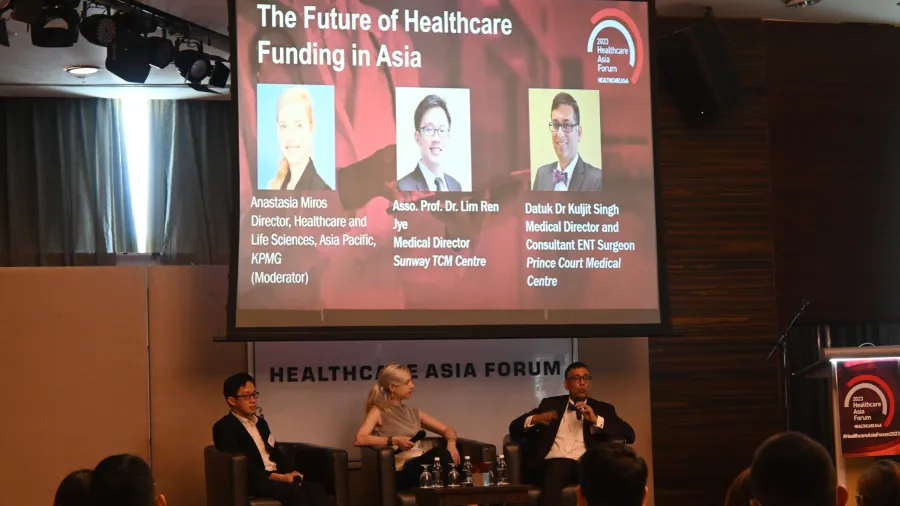
Malaysian health experts tackle gaps in SE Asian healthcare funding
Insurance firms are having difficulties between balancing profits and helping healthcare providers, the experts observed.
Leaders of private healthcare institutions in Malaysia acknowledge having to face difficulties in securing funding for accessible healthcare services, particularly in the context of emerging financial technologies, subscription models, and “buy now, pay later” mechanisms.
This came to light at the recent Kuala Lumpur Healthcare Asia Forum held at the Impiana KLCC Hotel on 24 May as KPMG director of healthcare and life sciences in Asia Pacific, Anastasia Miros, asked private hospital directors if insurance can play the socialist entrepreneur role in Asia versus the capitalist role.
Drawing a response, Datuk Dr. Kuljit Singh, medical director and consultant ENT surgeon at Prince Court Medical Centre, said insurance firms would sometimes look at their profits instead of a socialist entrepreneur role.
“On the positive side, insurance has to look into more of a socialistic method, though [they could look at] profits, but also look at it in this view,” said Singh.
Associate Professor Dr. Lim Ren Jye, medical director at Sunway TCM Centre, also responded to the question, underscoring insurance’s role in private healthcare due to the high cost of cancer care.
In this case, Lim said it is difficult to strike the balance between business and having a socialist perspective. “We have to admit that there must be a bottom line that we need to set for the insurance regulators to make sure they can gain the profit,” he said.
Lim cited the best example of health insurance in Taiwan where its single-payer National Health Insurance covers 99.9% of the 24 million population.
The insurance system in the market mandates enrolment and government subsidies will help pay for the healthcare expenses of the poor and disadvantaged.
Fintech helping healthcare fund
Amidst the existence of fintech players in healthcare, Miros asked the hospital leaders about their take on the emergence of this financial access.
Lim said they could see these additional channels for the finances of patients amidst the high cost of treatments.
One example of struggles before the new financial tools were developed was the reliance of cancer patients on crowdfunding and donations to fund their chemotherapy or other treatments, he said.
Inclusive healthcare funding
In terms of banks, their role in the healthcare landscape may be used to address issues of markets in the region that could not provide accessible healthcare.
Lim said the Asian Development Bank (ADB) is one example of a bank that provides healthcare projects to increase access to medical needs in Asia.
One recent example, according to ADB’s website, is the Intermed Hospital Expansion Project: FAST Report, which endeavors “to bring quality health care to middle-class Mongolians and improve medical accessibility for distant communities.”
To cap the panel session, Singh said everyone, including the public sector, private sector, and insurance, needs to play a role in healthcare financing.
In his closing remarks, Lim said that when new projects or policies come up for healthcare providers, they should continuously adapt. “There will always be corrective measures that you can come up with,” he said.
Over 64 participants attended the Kuala Lumpur Healthcare Asia Forum, which invited about 10 industry leaders to discuss the most pressing issues in Malaysian healthcare.



















 Advertise
Advertise





